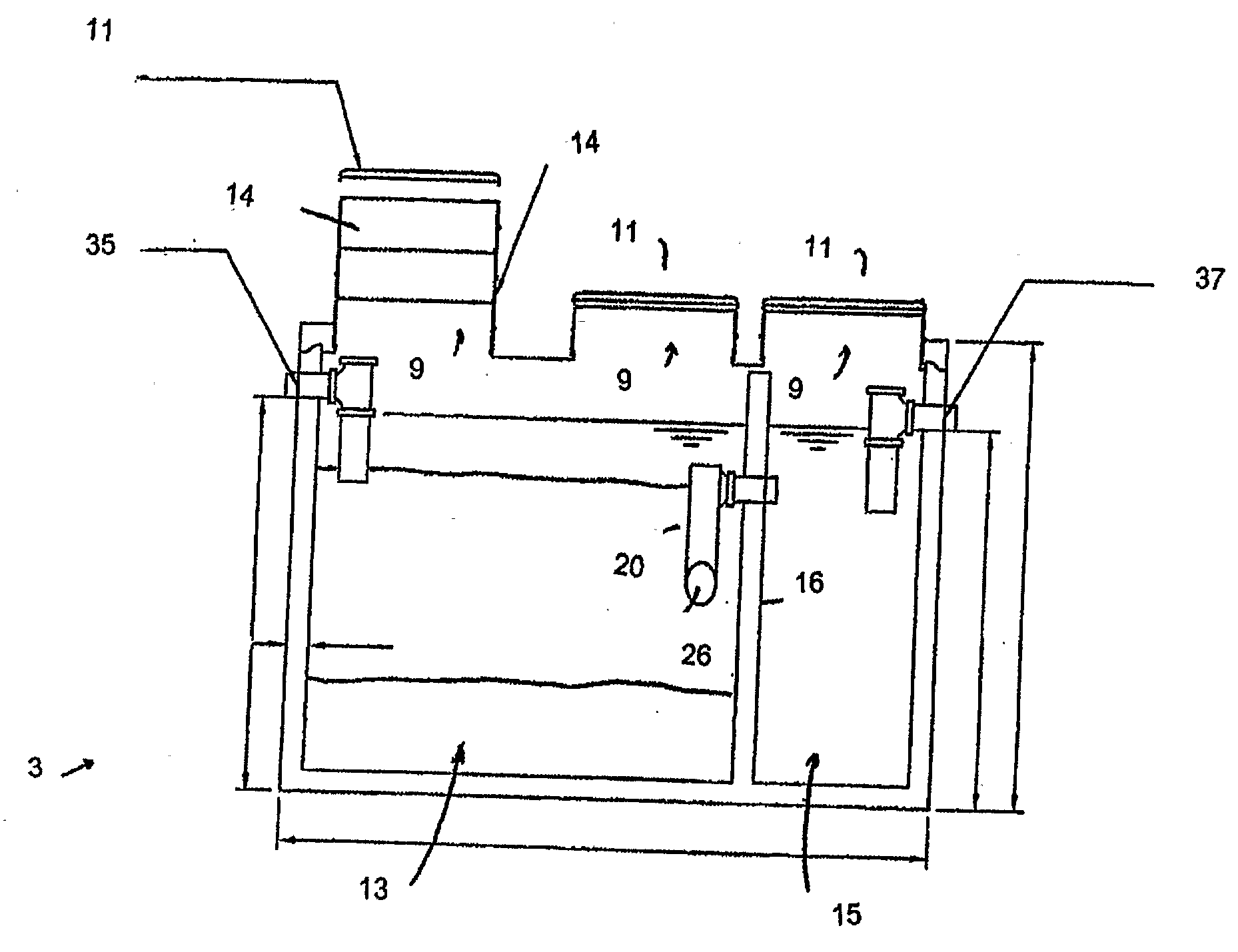High Performance Sewer System
a high-performance, sewer technology, applied in the direction of bends, pipes with cleaning apertures, bracing pipes, etc., can solve the problems of inefficient septic systems, citizens continue to use private wells, and the cost of historic sewer systems in a new parcel of land is one of the largest roadblocks to economic and infrastructure development, so as to minimize disruption to residents and optimize flow capacity
- Summary
- Abstract
- Description
- Claims
- Application Information
AI Technical Summary
Benefits of technology
Problems solved by technology
Method used
Image
Examples
example 1
Determining Appropriate Applied Current
[0172]Existing literature suggests that there is an optimum range of applied current that stimulates the removal of Chemical Oxygen Demand (COD) in domestic wastewater. Septage sludges are typically much higher strength, with COD values in excess of 20,000 mg / L—though this is offset by extended holding times over longer time periods. The existing literature supports the notion of a current of 100-500 mAmps, with the largest benefit around 300 mA. This example describes batch experiments designed to find the most appropriate current in the absence of hydraulic influence. A number of 5 to 7 day tests can be conducted at different currents to find the optimum result for higher strength, high residence time sludges.
Protocol
[0173]Batch tests can be carried out in 1 L bottles. Batch testing eliminates the effects of hydraulics while testing for the optimum range of applied current. At startup, the bottles can be filled out with sludge (e.g. anaerobic...
example 2
Micro-Aeration Related to Biological Yield (Upflow Anaerobic Testing)
[0183]Over-stimulation will contribute to new biomass; accordingly, it may be desirable to limit aeration to the biomass to a level that solely maintains energy requirements and support facultative bacteria efficient reactions. One key determinant is to generate either soluble COD or carbon dioxide (CO2) from solid mass. As efficient organisms will be able to convert COD into stored energy (biomass), even under ideal current scenarios for COD removal, COD removal and sludge production may occur simultaneously. In order to effectively limit sludge accumulation, COD removal must be more efficient than sludge production.
[0184]The following experimental protocol will enable refining of the applied current in the context of a hydraulic reactor, with an emphasis on increasing COD removal efficiency, targeting hydrolysis reactions and lowering net biomass production.
Protocol
[0185]To evaluate the electrolysis function unde...
example 3
Bench-Scale Septic Tank Testing
[0188]To optimize the electrolysis reactor and to test use of alternative, less costly electrode materials additional vessels can be constructed and tested. During this phase, a more comprehensive analysis of wastewater constituents and reactions can be conducted. Process flow can be closely akin to operations of an actual septic tank.
[0189]The experiments can be carried out using synthetic wastewater containing:
peptone—350 mg / L, beef extract—140 mg / L, (NH4)2CO3—50 mg / L, urea—40 mg / L, NaCl—35 mg / L, CaCl2 2H2O—20 mg / L, K2HPO4—20 mg / L, MgSO4 2H2O—10 mg / L, and cellulose—250 mg / L
[0190]Concentrations of Chemical Oxygen Demand (COD), volatile suspended solids (VSS) and Suspended Solids (SS) will be measured according to Standard Methods and off gas composition will be measured by gas chromatography.
[0191]A rectangular 5 L container can be used to simulate a primary treatment unit.
[0192]Nitrate, ammonium, and phosphate concentrations can be measured by HPLC.
[...
PUM
| Property | Measurement | Unit |
|---|---|---|
| diameter | aaaaa | aaaaa |
| angle | aaaaa | aaaaa |
| angle | aaaaa | aaaaa |
Abstract
Description
Claims
Application Information
 Login to View More
Login to View More - R&D
- Intellectual Property
- Life Sciences
- Materials
- Tech Scout
- Unparalleled Data Quality
- Higher Quality Content
- 60% Fewer Hallucinations
Browse by: Latest US Patents, China's latest patents, Technical Efficacy Thesaurus, Application Domain, Technology Topic, Popular Technical Reports.
© 2025 PatSnap. All rights reserved.Legal|Privacy policy|Modern Slavery Act Transparency Statement|Sitemap|About US| Contact US: help@patsnap.com



